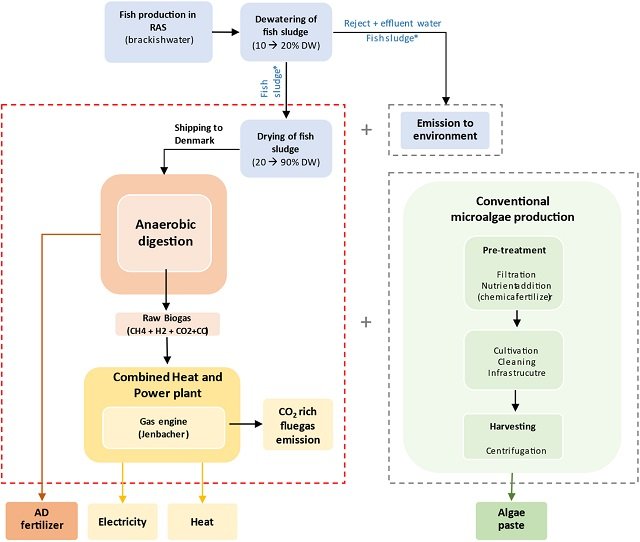Finland.- The joint project of the Technical University of Denmark (DTU), the Natural Resources Institute Finland (Luke) and the University of Jyväskylä developed a cost-effective solution for the removal of nitrogen from recirculating aquaculture systems. The study aimed to identify nitrogen removal, based on fish sludge and woodchip bioreactors. The joint project also studied innovative ways of reducing nutrient loads of recirculating aquaculture systems.
Recirculating aquaculture is a fish farming method in which water is circulated by pumping it from fish tanks into cleaning units and back. The method helps save water, and water cleaning technologies also help significantly reduce nutrient loads. By recovering solid matter, up to 80 per cent of phosphorus can be recovered. However, no cost-effective methods have been available, especially for nitrogen removal in recirculating aquaculture.
Luke and the University of Jyväskylä studied the use of woodchip bioreactors in the removal of nitrate nitrogen. Woodchips act as a carbon source in a process in which nitrate nitrogen is converted into harmless nitrogen gas. In conventional denitrification, i.e. a process in which nitrogen is released, methanol, among other fuels, is used as an external carbon source. However, methanol is expensive, and its use involves a high occupational safety risk.
“The woodchip bioreactors proved a cost-effective solution. By modifying the size and delay of the bioreactor, we were able to remove 80 per cent of nitrogen from recirculating aquaculture systems. Luke aims to study the operation of the woodchip bioreactor under winter conditions in test equipment in Laukaa and to optimise the ratio between the bioreactor size, and the volume or delay of water passing through it,” says Jani Pulkkinen, research scientist at Luke.
Study of challenges in phosphorus loads
In the project, Luke studied cost-effective means to reduce phosphorus and nitrogen loads in water discharged from recirculating aquaculture systems.
“By combining conventional sludge sedimentation with a modern woodchip bioreactor, we were able to remove 80 per cent of phosphorus and as much as 97 per cent of nitrogen. However, the large size of a woodchip bioreactor may limit the use of the technology in larger recirculating aquaculture systems,” Pulkkinen says.
The KTH Royal Institute of Technology in Sweden and Luke studied the removal of soluble phosphorus by means of reactive minerals. Polonite, a porous calcium silicate, was able to remove practically all soluble phosphorus from water discharged from a recirculating aquaculture system. Although Polonite was able to capture nearly all phosphorus from water, no full certainty of the method’s suitability in recirculating aquaculture was obtained, as it was impossible to test the saturation of Polonite, i.e. the frequency at which it should be replaced.
Stay Always Informed
Join our communities to instantly receive the most important news, reports, and analysis from the aquaculture industry.
“The use of reactive minerals can prove an effective method to bind phosphorus and therefore to reduce a system’s phosphorus emissions to a fraction of their previous level,” Pulkkinen says.
BONUS CLEANAQ project
BONUS CLEANAQ, a joint project of DTU, Luke and the University of Jyväskylä, studied ways of reducing the nutrient loads of recirculating aquaculture systems. The project, led by DTU, received BONUS funding and was also funded by the Strategic Research Council of the Academy of Finland.
More information
Jani Pulkkinen
Research Scientist
tel. +358295323297
jani.t.pulkkinen@luke.fi
Jouni Vielma
Principal Scientist, Research manager
tel. +358295327522
jouni.vielma@luke.fi
Source: LUKE
Editor at the digital magazine AquaHoy. He holds a degree in Aquaculture Biology from the National University of Santa (UNS) and a Master’s degree in Science and Innovation Management from the Polytechnic University of Valencia, with postgraduate diplomas in Business Innovation and Innovation Management. He possesses extensive experience in the aquaculture and fisheries sector, having led the Fisheries Innovation Unit of the National Program for Innovation in Fisheries and Aquaculture (PNIPA). He has served as a senior consultant in technology watch, an innovation project formulator and advisor, and a lecturer at UNS. He is a member of the Peruvian College of Biologists and was recognized by the World Aquaculture Society (WAS) in 2016 for his contribution to aquaculture.




